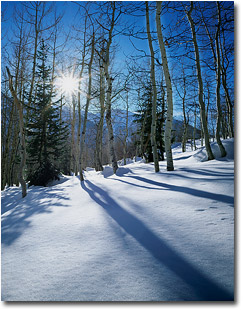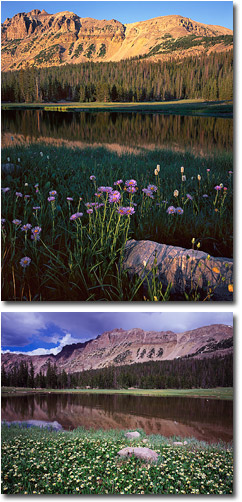Landscape Artistry
Ten Tips for Becoming a Better Landscape ArtistText and photography copyright Guy Tal
 6. Take Chances
6. Take Chances
With much trial and error, a photographer can learn the limitations of film, lenses, and other equipment, however there are situations when even the most accomplished shutterbug will not be able to tell for certain whether a successful image can be made. These are situations of extremes – very high or very low contrast, very deep or very shallow depth-of-field, very high magnification, and so on. These conditions challenge your equipment and your film, and results may be difficult to predict. In many of these situations, though, attempting to make an image despite the doubt may yield stunning results.
On a white Christmas Eve, I set out to spend the holiday in a mountain wilderness. The trek over deep snow was difficult, but the cold air, combined with wonderful silence and sparkling flakes afoot made it a visual feast. As the sun hung low over the horizon, aspen and spruce trees shed their long shadows on a ground covered in shimmering crystals, and the clear sky and remote peaks glowed in deep cerulean blue. The shadows made for wonderful leading lines, but leading to what? I was missing a prominent element for a complete composition. I made the unlikely choice of using the sun itself as an element in my image. I did not know if the coating on my lens was good enough to keep flare at bay, or whether I will be able to capture the extreme contrast given the narrow latitude of slide film. I decided it was worth a try. And what a wonderful Christmas present I got when I picked my chromes at the lab.
Previous Page Next Page

| 


